
1
Pediatrics
Chromosomal Abnormalities
• Chromosomal abnormalities are either numerical or structural.
• Chromosomal abnormalities occur in approximately 8% of fertilized ova but only in
0.6% of liveborn infants.
• 50% of spontaneous abortuses have chromosomal abnormalities.
• In newborns and older children, many features suggest the presence of a chromosome
anomaly, including LBW (SGA), FTT, developmental delay, and the presence of three
or more congenital malformations.
• Acquired chromosomal changes play a significant role in carcinogenesis and tumour
progression.
• The diagnosis is confirmed by chromosome analysis
TRiSOMY
Down Syndrome (trisomy 21)
• DS is the most common abnormality of chromosomal number. It occurs in 1 of every
1000 births.
• DS considered most common genetic cause of moderate intellectual disability and
characteristic dysmorphic features.
• Cytogenetics: the extra chromosome 21 may result from:
• Nondisjunction.
• Translocation.
• Mosaicism.
Non-disjunction (94%):
• Most cases result from an error at meiosis, the pair of chromosome 21s fails to
separate, so that one gamete has two chromosome 21s and one has none.
• Fertilisation of the gamete with two chromosome 21s gives rise to a zygote with
trisomy 21.
• Parental chromosomes do not need to be examined.
Genetics
f
Dr.Athal
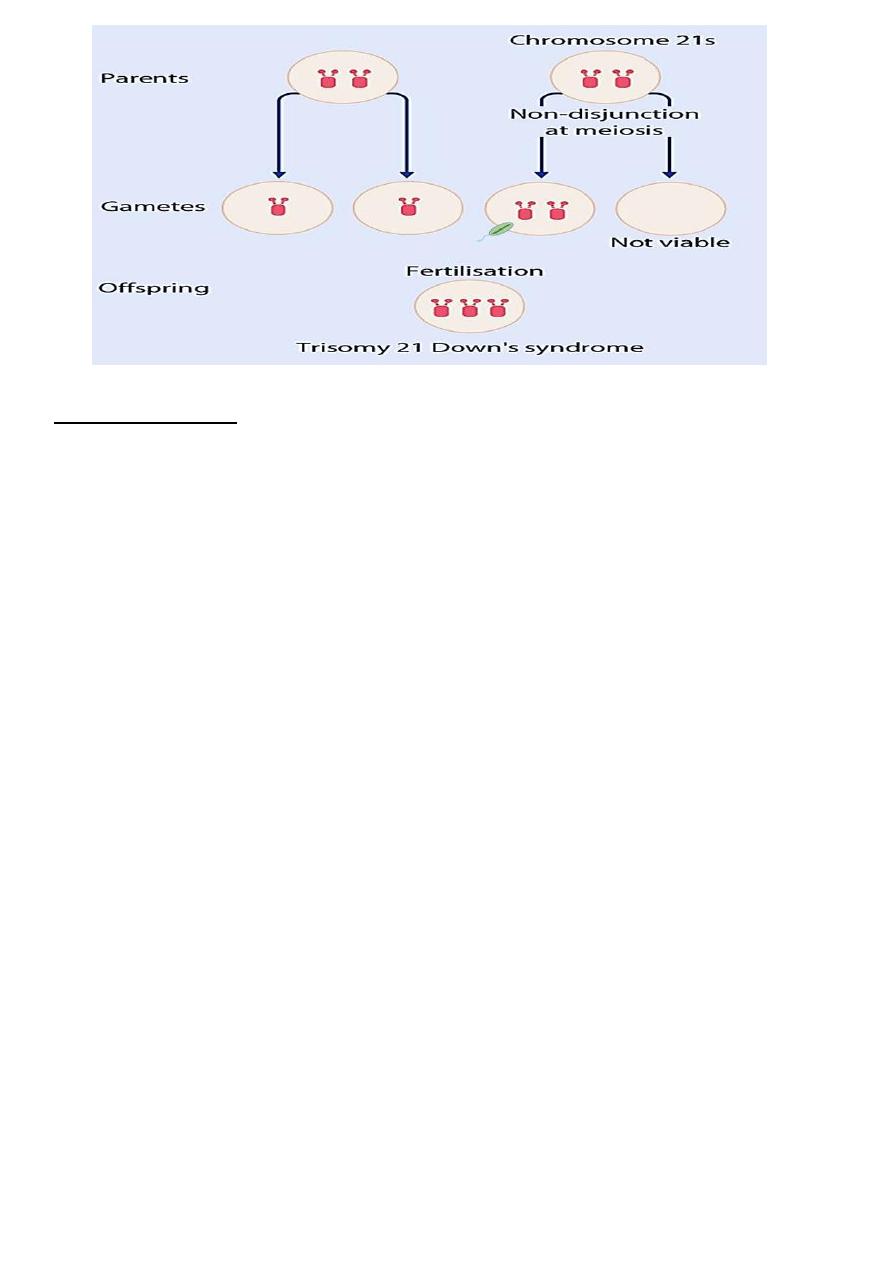
2
Clinical Features:
• Down's syndrome is usually suspected at birth because of the baby's facial appearance.
Typical craniofacial appearance
Brachycephaly with flat occiput and third fontanelle
Round face and flat nasal bridge.
Upslanted palpebral fissures.
Epicanthic folds (a fold of skin running across the inner edge of the palpebral fissure).
Brushfield spots in iris (pigmented spots).
Small mouth and protruding tongue.
Small ears.
Other Anomalies
Normal BW & length, but hypotonic.
Short neck
Short broad hand with single palmar creases, incurved fifth finger.
Wide 'sandal' gap between 1
st
& 2
nd
toes.
Congenital heart defects (40%)
Duodenal atresia
Annular pancreas
Imperforated anus.
Hirschsprung's disease

3
Later Medical Problems:
Delayed motor milestones.
Moderate to severe learning difficulties.
Increased susceptibility to infections.
Hearing impairment from secretory otitis media.
Visual impairment from cataracts, squints, myopia.
Increased risk of leukaemia and solid tumours.
Risk of atlantoaxial instability.
Hypothyroidism and DM.
coeliac disease
Epilepsy
Alzheimer's disease
Edwards' syndrome (trisomy 18)
It is the second most common autosomal trisomy, occurring in approximately 1 in
7500 live births.
Greater than 95% of conceptuses with trisomy 18 are spontaneously aborted in the
first trimester.
Trisomy 18 is usually lethal; less than 10% of affected infants survive until their first
birthday.
The diagnosis is confirmed by chromosome analysis
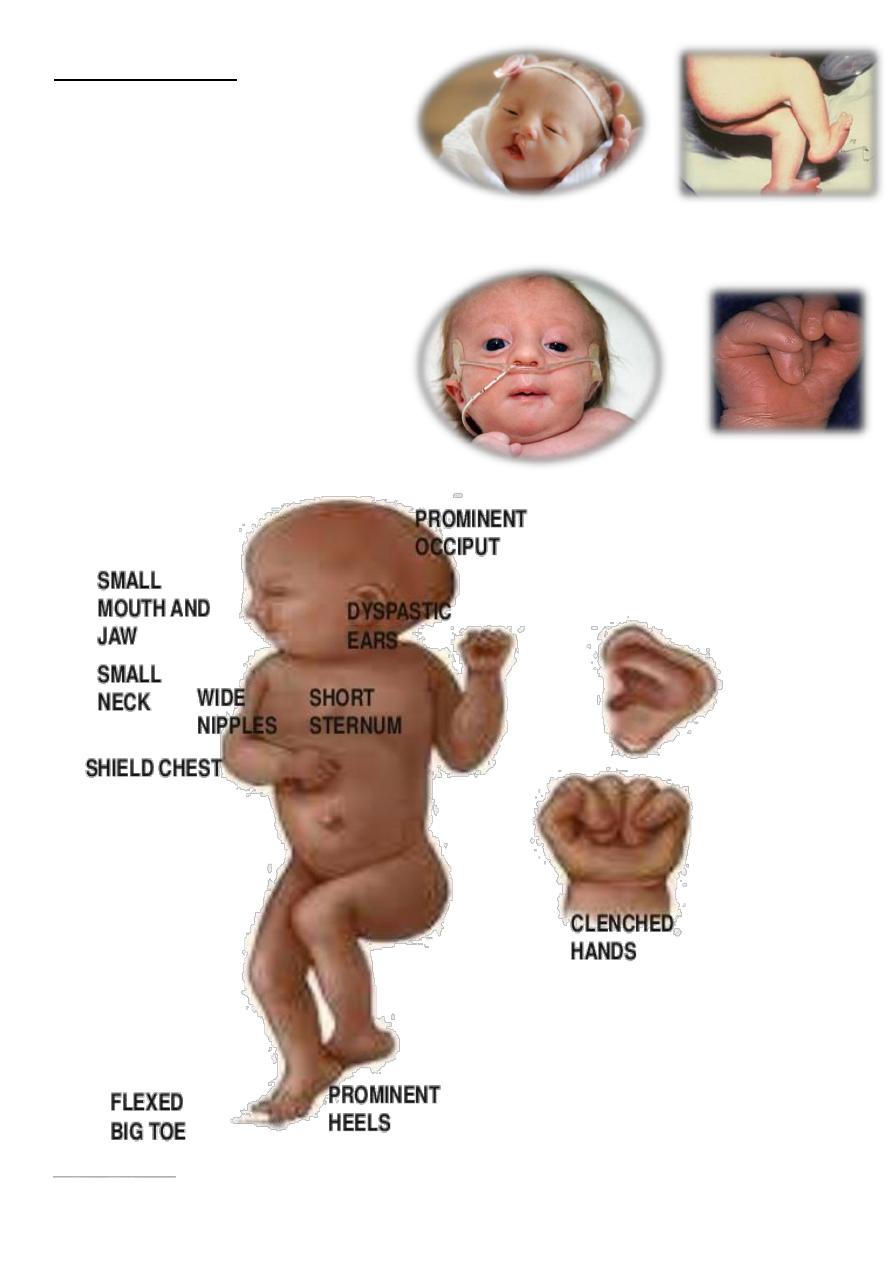
4
Clinical Features:
Low birth weight
Prominent occiput
Small mouth and chin
Cleft lip or palate
Low set & malformed ears
Short sternum
Flexed, overlapping fingers
Rocker-bottom feet
Cardiac and renal malformations
Severe developmental delays
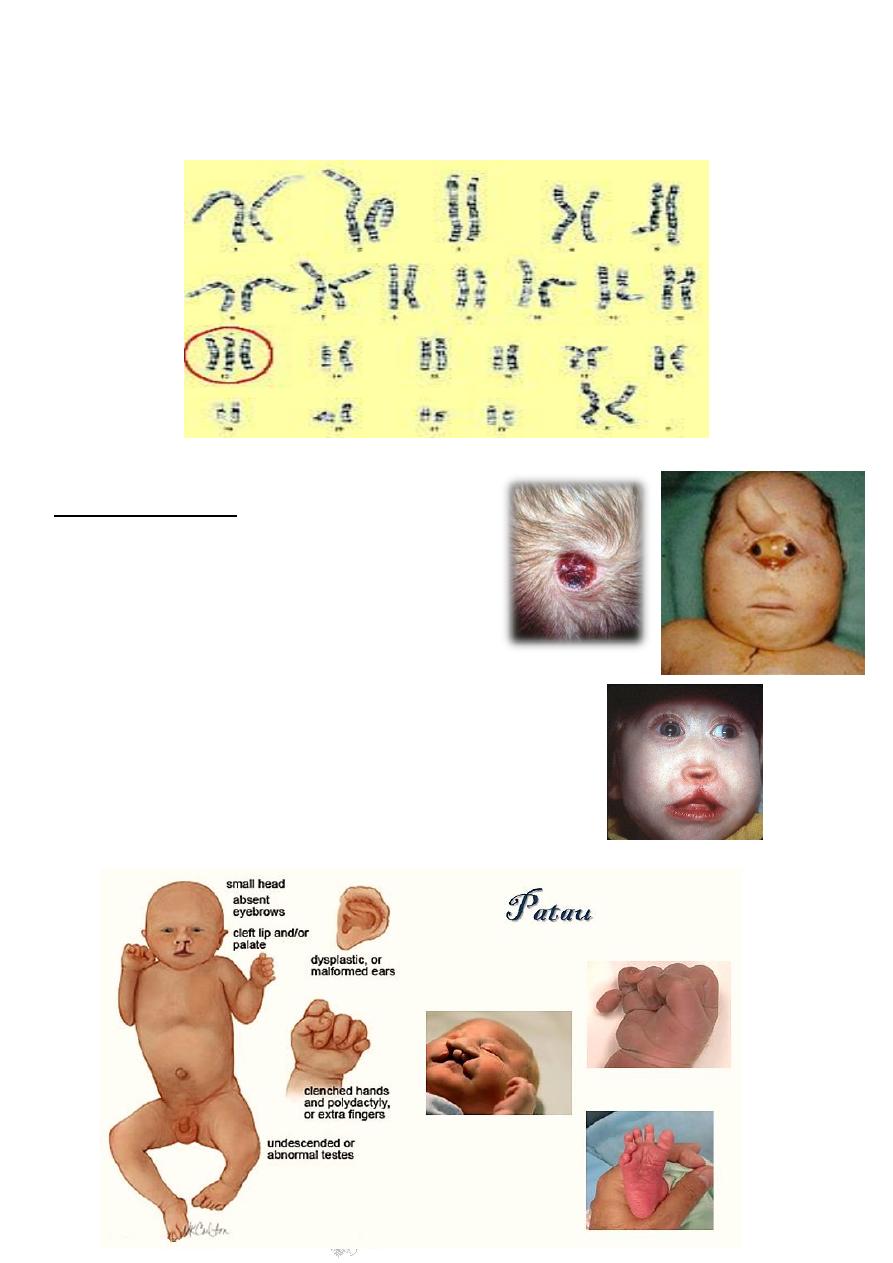
5
Patau's Syndrome (trisomy 13)
trisomy 13 third of the common trisomies, occurs in 1 in 12,000 live births. It is
usually fatal in the first year of life.
Clinical Features:
SGA
Structural defect of brain
Scalp defect
Microcephaly
Microphthalmia
Midline facial defects as single orbit, single nostril
Cleft lip and palate
Polydactyly
Cardiac and renal malformations
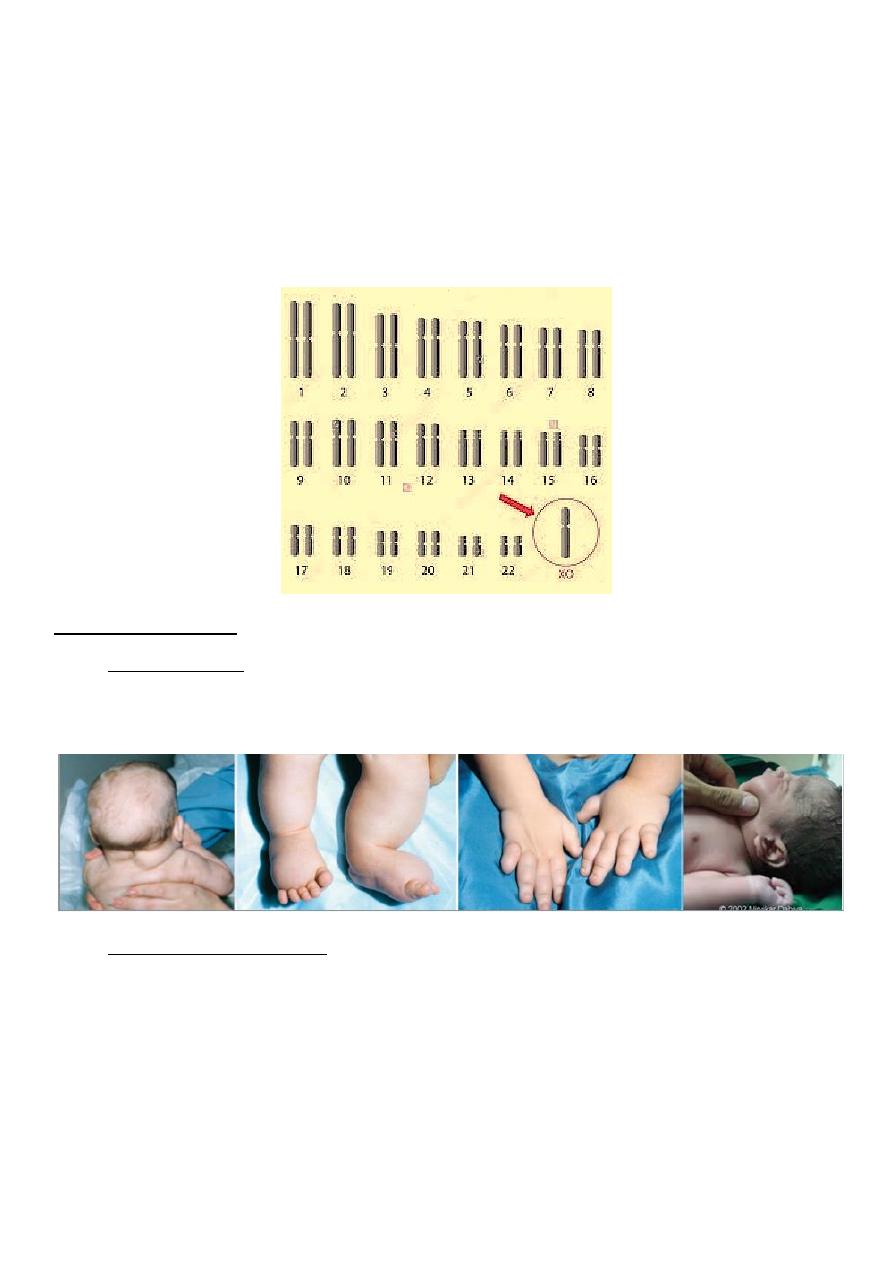
6
MONOSOMY
Turner's syndrome (45, X)
TS is the only condition in which a monosomic conceptus survives to term; however,
95-99% of embryos with 45,X are spontaneously aborted.
TS occurs in approximately 1 in 5,000 female live births.
Clinical Features:
In the newborns can include: SGA, webbing of the neck, protruding malformed ears,
and lymphedema of the hands and feet, although many newborns are phenotypically
normal.
Older children and adults:
Short stature - cardinal feature (SS may be the only clinical abnormality in
children).
Neck webbing or thick neck
Wide carrying angle (cubitus valgus)
Widely spaced nipples
Congenital heart defects (particularly coarctation of the aorta)
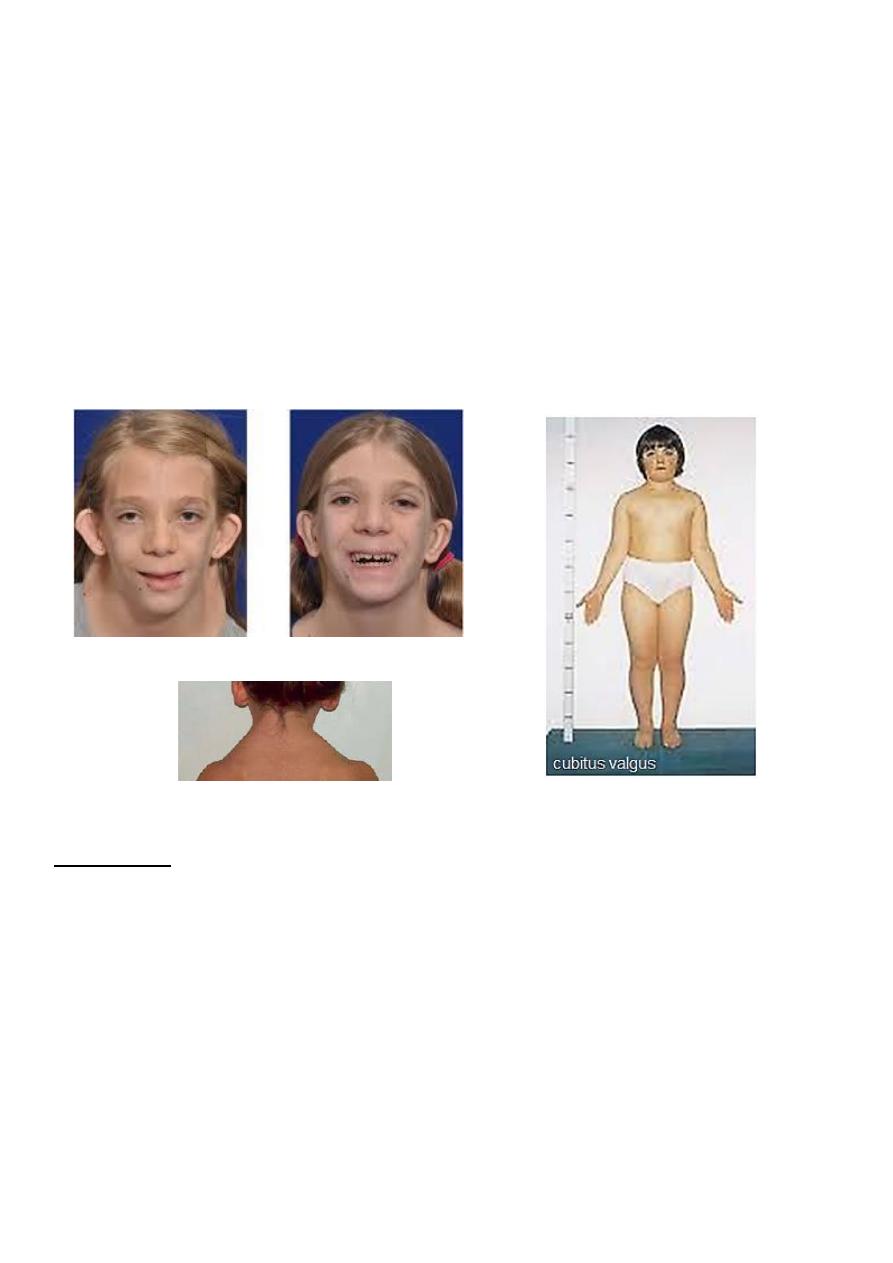
7
Delayed puberty
Ovarian dysgenesis resulting in infertility, although pregnancy may be possible with
in-vitro fertilisation (IVF) with donated ova.
Hypothyroidism
Renal anomalies
Pigmented moles
Recurrent otitis media
Most patients tend to be of normal intelligence, but intellectual disability is seen in
up to 6% of affected children.
Treatment:
Growth hormone therapy.
Oestrogen replacement for development of secondary sexual characteristics at the
time of puberty (but infertility persists).
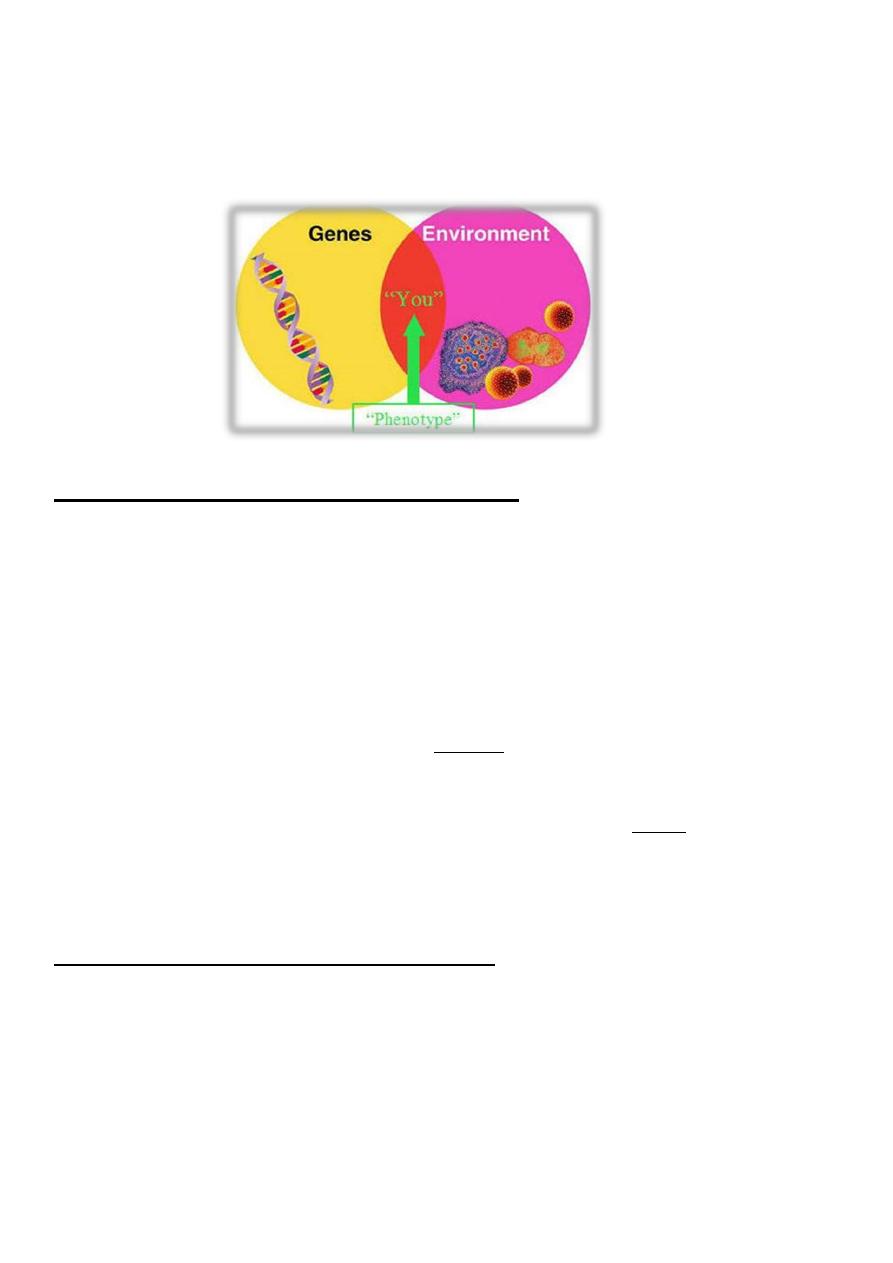
8
Multifactorial Inheritance
• Result from the interplay of genetic and environmental factors.
• The disorders occur more often in first- and second-degree relatives than would be
expected by chance.
Characteristics of Multifactorial Inheritance:
The risk of recurrence is related to the incidence of the disease.
Some disorders have a sex predilection. E.g. pyloric stenosis is more common in males,
whereas congenital dislocation of the hips is more common in females.
The likelihood that both identical twins will be affected with the same malformation is
less than 100% but much greater than the chance that both members of a nonidentical
twin pair will be affected. This is in contrast with the pattern seen in mendelian
inheritance, in which identical twins almost always share fully penetrant genetic
disorders.
The risk of recurrence is increased when multiple family members are affected. E.g. the
risk of recurrence for unilateral cleft lip and palate is 4% for a couple with 1 affected
child and increases to 9% with 2 affected children.
The risk of recurrence may be greater when the disorder is more severe. E.g. an infant
who has long-segment Hirschsprung disease has a greater chance of having an affected
sibling than the infant who has short-segment Hirschsprung disease.
Conditions with multifactorial inheritance:
Congenital Malformations
• Neural tube defects
• Congenital heart disease
• Cleft lip and palate
• Pyloric stenosis
• CDH

9
• Talipes
• Hypospadias
Adult Life
• Atherosclerosis and coronary heart disease
• Obesity
• Diabetes mellitus
• Asthma
• Epilepsy
• Hypertension
• cancer
:)))
